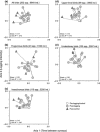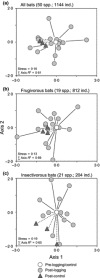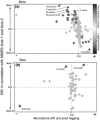Reconciling timber extraction with biodiversity conservation in tropical forests using reduced-impact logging
- PMID: 25954054
- PMCID: PMC4415554
- DOI: 10.1111/1365-2664.12391
Reconciling timber extraction with biodiversity conservation in tropical forests using reduced-impact logging
Abstract
Over 20% of the world's tropical forests have been selectively logged, and large expanses are allocated for future timber extraction. Reduced-impact logging (RIL) is being promoted as best practice forestry that increases sustainability and lowers CO2 emissions from logging, by reducing collateral damage associated with timber extraction. RIL is also expected to minimize the impacts of selective logging on biodiversity, although this is yet to be thoroughly tested.We undertake the most comprehensive study to date to investigate the biodiversity impacts of RIL across multiple taxonomic groups. We quantified birds, bats and large mammal assemblage structures, using a before-after control-impact (BACI) design across 20 sample sites over a 5-year period. Faunal surveys utilized point counts, mist nets and line transects and yielded >250 species. We examined assemblage responses to logging, as well as partitions of feeding guild and strata (understorey vs. canopy), and then tested for relationships with logging intensity to assess the primary determinants of community composition.Community analysis revealed little effect of RIL on overall assemblages, as structure and composition were similar before and after logging, and between logging and control sites. Variation in bird assemblages was explained by natural rates of change over time, and not logging intensity. However, when partitioned by feeding guild and strata, the frugivorous and canopy bird ensembles changed as a result of RIL, although the latter was also associated with change over time. Bats exhibited variable changes post-logging that were not related to logging, whereas large mammals showed no change at all.Indicator species analysis and correlations with logging intensities revealed that some species exhibited idiosyncratic responses to RIL, whilst abundance change of most others was associated with time.Synthesis and applications. Our study demonstrates the relatively benign effect of reduced-impact logging (RIL) on birds, bats and large mammals in a neotropical forest context, and therefore, we propose that forest managers should improve timber extraction techniques more widely. If RIL is extensively adopted, forestry concessions could represent sizeable and important additions to the global conservation estate - over 4 million km2.
Keywords: BACI; Guyana; RIL; bat; before-after control-impact; bird; feeding guild; forest disturbance; forestry; sustainable forest management.
Figures




References
-
- Azevedo‐Ramos, C. , de Carvalho, O. & do Amaral, B.D. (2006) Short‐term effects of reduced‐impact logging on eastern Amazon fauna. Forest Ecology and Management, 232, 26–35.
-
- Barlow, J. , Peres, C.A. , Henriques, L.M.P. , Stouffer, P.C. & Wunderle, J.M. (2006) The responses of understorey birds to forest fragmentation, logging and wildfires: an Amazonian synthesis. Biological Conservation, 128, 182–192.
-
- Beaudrot, L. , Rejmánek, M. & Marshall, A.J. (2013) Dispersal modes affect tropical forest assembly across trophic levels. Ecography, 36, 984–993.
-
- Bicknell, J. & Peres, C.A. (2010) Vertebrate population responses to reduced‐impact logging in a neotropical forest. Forest Ecology and Management, 259, 2267–2275.
LinkOut - more resources
Full Text Sources
Other Literature Sources
